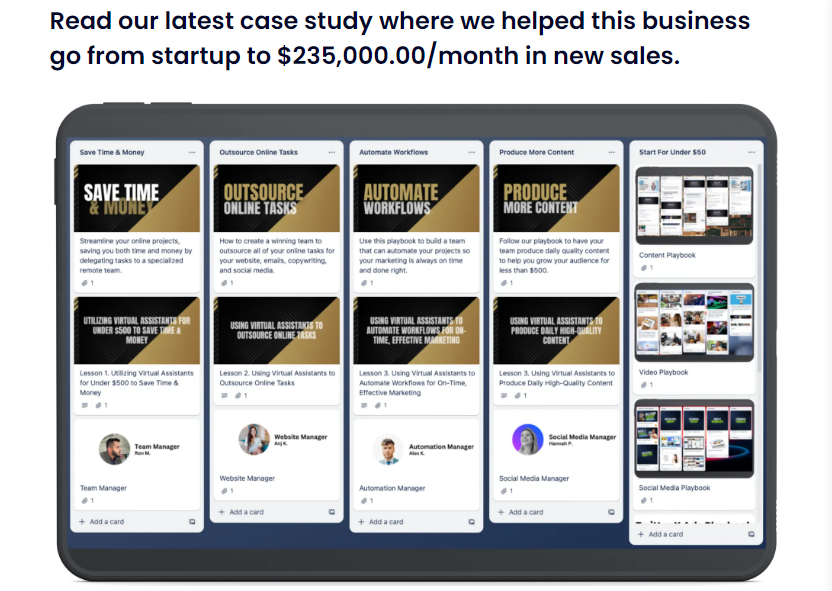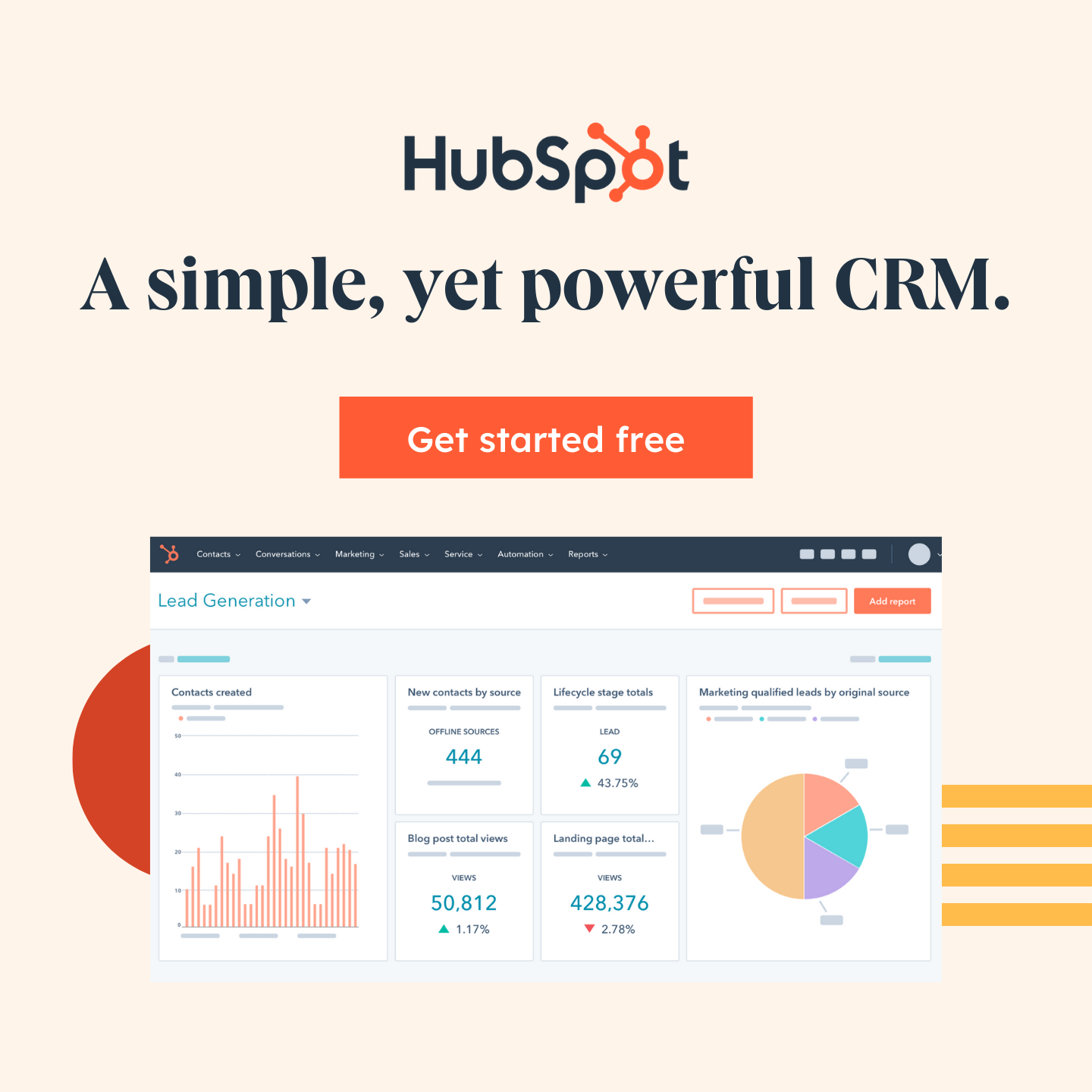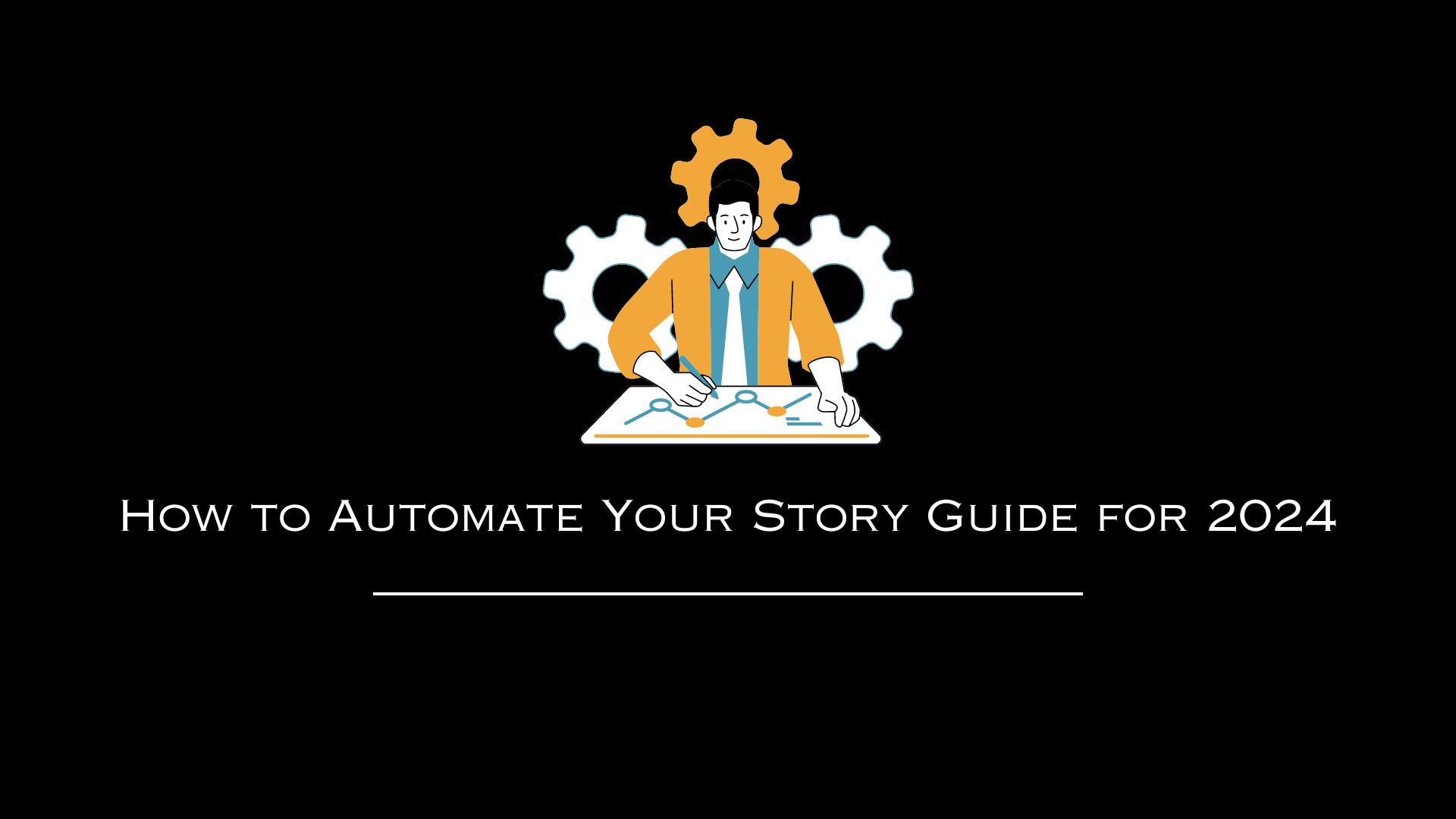AutomationLinks
This blog post has been researched, edited, and approved by expert Hannah Peake. Join our newsletter below to get our free marketing guides.
Here are four simple tips to you learn about how to Automate Your Marketing Using AI:
- Create a Strategic Sales Funnel: Before diving into automation, it's essential to have a roadmap. Just like a sales funnel acts as a business's playbook, AI algorithms need a structured environment to work effectively. If you are already using a sales funnel, consider adding AI-powered chatbots or automated email responses to manage your customer interactions better.
- Hire a Virtual Team with Specific Skillsets: The power of automation is truly harnessed when you have a specialized team. Include members proficient in AI and machine learning to handle tasks like data analysis, customer segmentation, and automated reporting.
- Utilize Data-Driven Advertising: Platforms like Google and Facebook offer AI-powered advertising options. Make use of AI algorithms to analyze customer data and adjust your ad targeting in real-time, allowing you to make the most of your budget.
- Consistent Branding and Messaging: With the help of AI, you can maintain a consistent brand voice across different platforms. Natural language generation tools can write SEO-friendly blog posts, email copy, or social media posts, ensuring brand consistency.
4 Other Tips to Scale Your Marketing Automation:
- AI-Powered Content Creation: Use AI tools to automatically generate content based on user behavior and preferences. This not only saves time but also makes your content marketing strategy more personalized and effective.
- Automated Social Media Management: AI tools can predict the best times to post and even suggest content types that resonate most with your audience.
- Customer Journey Mapping: Use AI to analyze the customer journey across different touchpoints. Understand where they drop off or engage more to fine-tune your sales funnel and customer engagement strategies.
- Automated Reporting and Analytics: Instead of manually combing through data, use AI-powered analytics tools that provide actionable insights, highlight trends, and even predict future outcomes.
How Our Client Made $235K Last Month Using This Strategy
The Intersection of Sports and Business
As a former hockey player, I often find myself drawing parallels between the world of sports and the realm of business. Just like in any competitive sport, the more repetitions or "reps" you get, the more you improve. This principle holds true in business as well.
But it's not just about practice; it's about consistent, deliberate action over time that leads to success. Today, I want to introduce myself—Brad Smith, the owner of Automation Links. Over the past eight years, I've specialized in helping businesses grow online, mainly through sales funnels and systematic approaches.
The Power of Reps in Business
In the business context, "reps" translate to repeated, consistent efforts that you make to grow your venture. You can't just open shop and expect customers to pour in. Building a business requires deliberate steps to get your name out there, build an audience, and most importantly, establish trust.
Trust doesn't happen overnight; it needs to be earned through consistent performance and delivery. To put it succinctly, just as a hockey player drills the same shots repeatedly to perfect them, a business needs to consistently execute its strategies to build and sustain momentum.
The Success Story: A Startup Case Study
I recently had the opportunity to work with a startup that exemplifies the value of putting in the reps. When they first came to me, they were entirely new in the business sphere and were working with a limited budget.
However, they had ambition and the willingness to grow fast. We decided to implement a focused sales funnel system, a strategy I've been advocating for years. The results? One year later, the startup clocked in at $235,000 in sales for just one month.
My Four-Step Process
What led to such impressive results was not a secret formula but a four-step process designed to save both time and money. This involved not only having a well-structured sales funnel but also maintaining a consistent online presence.
A well-rounded approach to online marketing—from updating the website and crafting social media posts to writing blogs and sending out regular emails—played a significant role in this success.
Consistency is Key
In sports, we learn early on that what separates the good from the great is often a matter of consistency. This startup followed suit by sticking to a disciplined routine.
They weren't just doing the bare minimum; they were doing the reps needed to excel. So, the question is, are you willing to put in the reps to get your business name out there online?
Step 1: Creating a Strategic Sales Funnel as Your Business Playbook

The Importance of a Sales Funnel
Step one in my four-step process is to create a strategic sales funnel for your business. Now, if you're unfamiliar with what a sales funnel is, think of it as your team's playbook. Just like a playbook in sports outlines various strategies and plays to beat the opponent, a sales funnel serves as a blueprint for your business's sales and marketing activities. It's the roadmap that you and your team will follow to attract, engage, and convert prospects into loyal customers.
Sales Funnels Are Your Blueprint
Sales funnels may seem complicated, but they don't have to be. The objective is to create a system—like a game plan—that you can refer to consistently. This sales funnel should include all elements of your online presence: your website, landing pages, email campaigns, social media activities, and even video content. The point is that when you're a small business, especially, you can't afford to wing it. You need a structured plan that everyone on your team understands and can follow.
Customization is Key
When I worked with the startup in our case study, we customized their sales funnel to suit their unique business needs. We identified their target audience and selected the appropriate marketing channels such as Facebook, Twitter, and Google. From there, we designed landing pages with compelling lead magnets like webinars and free downloads. Then, we set up a series of follow-up emails and automated campaigns. Even the copywriting and the videos were tailored to resonate with their specific audience.
Consistency Through Structure
The beauty of having a sales funnel is that it allows you to be consistent. You're not doing random acts of marketing but following a pre-defined path that aligns with your business goals. This sort of consistency is crucial for getting in those important 'reps' that we've talked about. Because you're doing the same thing over and over again, you can refine and improve your strategies, leading to better results over time.
Utilizing Ready-Made Playbooks
If creating a sales funnel from scratch sounds daunting, there are plenty of pre-built options available that you can adapt for your business. I offer various sales funnel templates on my website, Automation Links, that you can grab and modify to fit your needs. Having a ready-made playbook to follow ensures that you're not missing any steps and allows you to focus on execution rather than planning.
Step 2: Building Out a Virtual Team to Run Your Marketing

Why a Virtual Team?
In the second step of our journey to business success, we turn our focus toward building a virtual team. Why? Because, let's face it, you're busy. Whether it's servicing clients, planning for the future, or managing day-to-day operations, your hands are full.
By outsourcing some of these tasks to a specialized virtual team, you're not only freeing up your time but also bringing in experts to handle specific tasks that you may not be specialized in.
A Budget-Friendly Solution
You don't need to break the bank to assemble a strong team. For less than $500, we can help you put together a crew that takes care of all your marketing needs.
In our example with the startup, we built a team of four specialized roles to handle various aspects of their online presence.
The Four Pillars: Your Virtual Team
Here's a breakdown of the team members and their roles:
- Website Manager: Responsible for maintaining the website, editing landing pages, and ensuring everything is up to date. If you have an event or a new blog post, they're the one to get it live.
- Content Manager: This team member focuses on creating and posting blogs and other written content. They also manage imagery for social media, ensuring that everything aligns with your brand voice.
- Video Editor: Whether it's for your YouTube channel, webinars, or any other video content, this team member makes sure everything is edited professionally and in line with your brand.
- Social Media Manager: With the consistency of posting every single day for the past 12 months, this role ensures your social media platforms are always buzzing and your brand stays in the public eye.
Giving Them a Plan: Your Playbook
The most common mistake businesses make when hiring virtual assistants is not providing them with a clear, structured plan. Without guidance, you're essentially setting yourself up for disappointment. This is why we create a playbook for each virtual team member, which is tailored to your specific business needs.
Consistency in Execution
Our playbooks provide the virtual assistants with the steps needed to produce high-quality work consistently. From blogs to social media images, copywriting, and emails, each playbook ensures that the virtual team's output is aligned with your brand messaging.
Step 3: Implementing a Marketing System for Tangible Results

Setting the Stage
So, you've built your website, your landing pages, and even assembled a top-notch virtual team. What's next? Now, it's time to focus on actually generating results. The third step is to integrate an advertising strategy that will turbocharge your efforts and get you the conversions you desire.
Bringing in the Advertising Expert
To ensure we get the most out of your marketing channels, we also integrate an advertising freelancer into your virtual team. This person specializes in running campaigns across platforms like Google, Facebook, and Instagram.
They're not just there to push your content out to the world but also to engage in smart strategies like remarketing and retargeting.
Making the Most Out of a Budget
Contrary to popular belief, effective advertising doesn't need to be costly. Our client started with just $500 a month and was able to generate thousands in sales. The key here is to utilize a proven method.
You already have your blog posts, your videos, and your social media posts—now it's time to put them to work.
Data-Driven Advertising
One of the greatest advantages of having a virtual team working on your content is that you can easily identify what works and what doesn't.
The advertising freelancer uses this valuable information—knowing which posts, blogs, and videos performed well—to launch highly targeted ad campaigns. In a sense, your organic efforts provide the ammunition for your paid ones.
Strategic Planning
Having established what works, the advertiser has a clear path for action. They know:
- The Right Keywords: From your organic traffic, we identify what terms are leading people to your website.
- Effective Imagery and Video: Again, from your social media metrics, we understand what kind of visual content resonates with your audience.
- Retargeting Strategies: Knowing what has engaged your audience before, the advertiser can effectively retarget these individuals to encourage them to complete a purchase.
Amplifying Your Business
The end game here is simple: take what works and make it work harder. By identifying your most effective content and turning it into targeted ads, we don't just double your output; we triple or even quadruple it.
Wrapping It Up
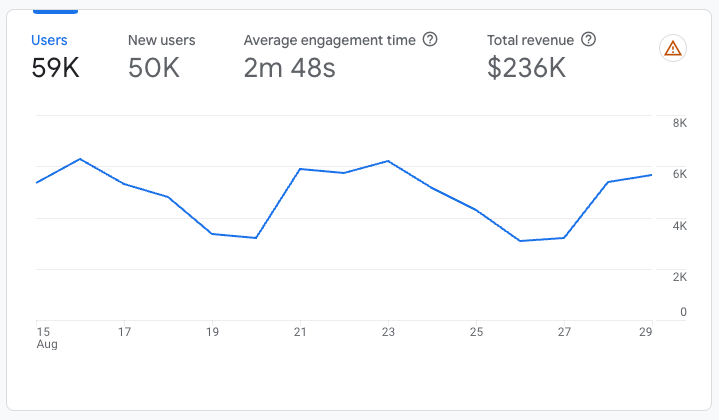
The journey to automating your business and amplifying your results doesn't have to be daunting or expensive. It's all about laying the proper foundation, step-by-step. You can start small—perhaps with a virtual team that costs less than $500 to manage your marketing needs.
By taking it one step at a time, like one of our case study clients, you too can see incredible growth. In just one year, they achieved $235,000 in sales and garnered over 50,000 website visitors. Their business continues to double month over month, thanks to the well-oiled machine they've put into place.
We at Automation Links understand that every business owner has their strengths, which is why we build you a virtual assistant team trained to manage the tasks you'd rather not focus on.
Our teams follow proven playbooks tailored to your business, ensuring consistency and quality across all your marketing channels. This frees you up to concentrate on what you're truly good at, while your virtual team continues to "bust out those reps" in the background, fueling your business's growth.
So if you're interested in replicating this kind of success, I invite you to check out our monthly webinars where we break down our four simple steps to automating your business.
Visit our website to read the full case study and see how a small investment can yield significant returns. Thank you for taking the time to watch and read. Here's to scaling your business and achieving better results online!
FAQs
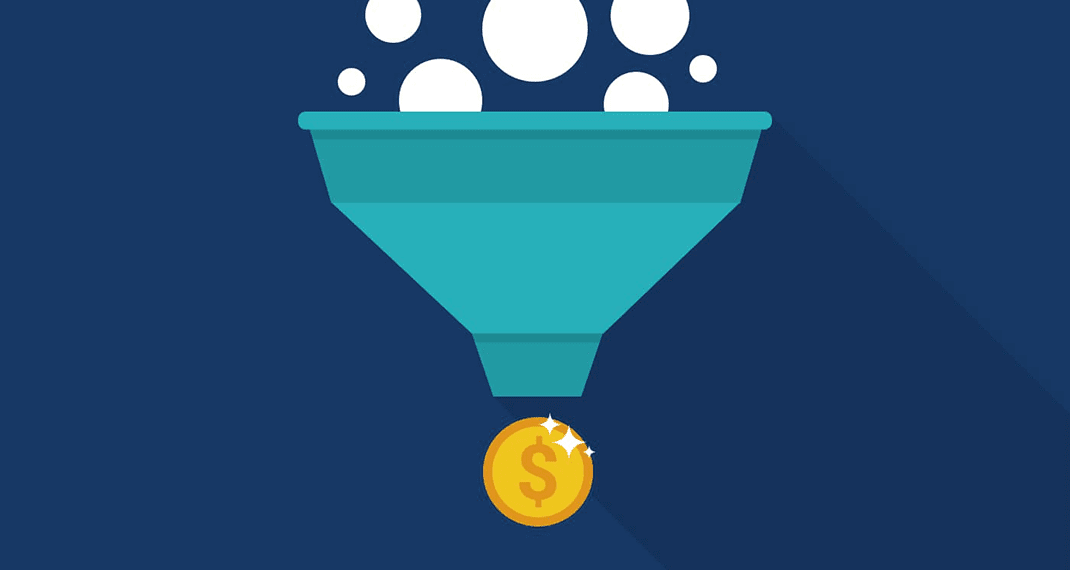
What is a Sales Funnel?
A sales funnel is a marketing concept that represents the journey a potential customer takes from being aware of a product or service to making a purchase. It is called a funnel because, similar to a funnel's shape, the number of potential customers decreases as they move through each stage of the funnel.
The purpose of a sales funnel is to guide and nurture leads, ultimately converting them into paying customers. By understanding the different stages of a sales funnel, businesses can optimize their marketing strategies and increase their chances of generating revenue.
The first stage of a sales funnel is the awareness stage. At this stage, potential customers become aware of a business's products or services through various marketing channels such as social media, advertising, or word-of-mouth.
The goal is to attract as many potential customers as possible and make them aware of the business's offerings. This can be achieved through targeted marketing campaigns, engaging content, and effective branding.
The second stage of a sales funnel is the interest stage. Once potential customers are aware of a business's offerings, they start showing interest by seeking more information or engaging with the business's content.
This is an opportunity for businesses to capture leads by offering valuable content, such as eBooks, webinars, or free trials. By providing relevant and helpful information, businesses can build trust and establish themselves as experts in their industry.
The third stage of a sales funnel is the decision stage. At this point, potential customers have gathered enough information and are evaluating whether to make a purchase. Businesses need to provide compelling reasons for customers to choose their products or services over competitors.
This can be done through persuasive sales presentations, testimonials, or limited-time offers. The goal is to address any concerns or objections potential customers may have and convince them to take the next step.
The final stage of a sales funnel is the action stage. This is where potential customers make a purchase and become paying customers. Businesses should make the purchasing process as seamless and convenient as possible to encourage conversions.
This can involve offering multiple payment options, providing clear instructions, and ensuring excellent customer service. Once a customer completes a purchase, businesses should continue to nurture the relationship to encourage repeat purchases and referrals.
How Can Businesses Measure The Effectiveness of Incorporating Sports Principles Into Their Operations?
One way businesses can measure the effectiveness of incorporating sports principles into their operations is by tracking key performance indicators (KPIs). KPIs are measurable metrics that reflect the success of specific goals or objectives.
By setting KPIs related to the implementation of sports principles, businesses can monitor their progress and evaluate the impact on their operations. For example, a business could set a KPI to increase employee productivity by a certain percentage after introducing sports-inspired team-building activities.
By regularly measuring and analyzing this KPI, the business can determine if the incorporation of sports principles is positively affecting their operations.
Another method businesses can use to measure the effectiveness of incorporating sports principles is through employee feedback and surveys. By gathering input from employees, businesses can gain insights into how the implementation of sports principles has impacted their motivation, teamwork, and overall job satisfaction.
For instance, a business could conduct anonymous surveys to assess whether employees feel more engaged and motivated after participating in sports-inspired training programs. By analyzing the feedback received, businesses can gauge the effectiveness of incorporating sports principles and make adjustments if necessary.
Businesses can also measure the effectiveness of incorporating sports principles by comparing performance data before and after implementation. By collecting data on key areas such as sales, customer satisfaction, and employee turnover, businesses can assess the impact of sports-inspired strategies on their bottom line.
For example, a business could compare sales figures from the year before introducing sports principles to the year after. If there is a noticeable increase in revenue, it can be attributed to the incorporation of sports principles into their operations.
Additionally, businesses can utilize case studies and success stories from other companies that have successfully incorporated sports principles. By studying how other businesses have implemented sports-inspired strategies and the positive outcomes they have achieved, businesses can gain valuable insights and benchmarks to measure their own effectiveness.
For instance, a business could research how a competitor used sports principles to improve customer loyalty and retention. By adapting similar strategies and monitoring their own progress, businesses can determine if they are on track to achieve similar results.

